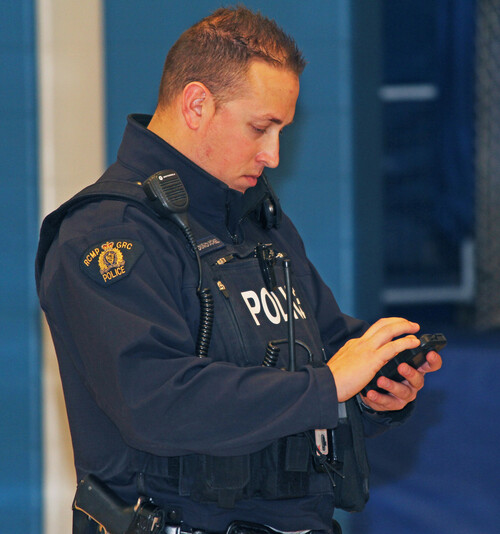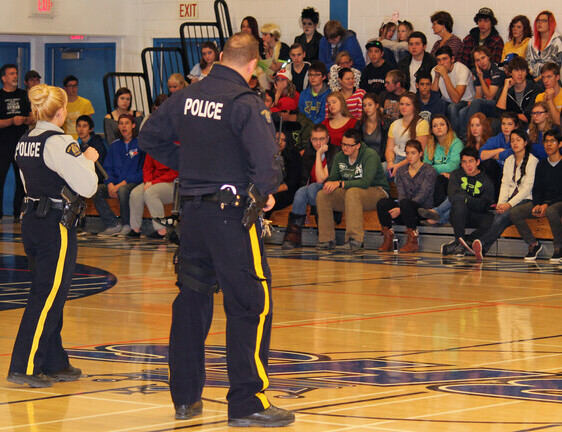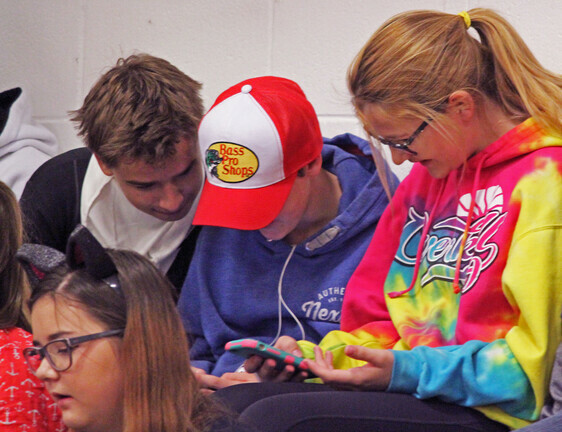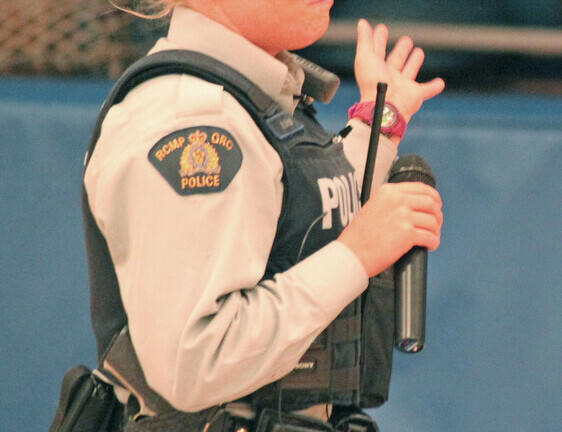
PICTURE BUTTE – A high school shop teacher wouldn’t think of turning a student loose on a menacing power tool without providing some guidelines for its use and outlining some of the possible consequences of its misuse.
That’s why RCMP made a recent stop at Picture Butte High School to warn students about technology that has the potential to change their lives forever and one almost all have at their fingertips.
Fresh off an international summit on cybercrimes, constables Greg Dumouchel and Brittany Small of Picture RCMP talked about the multiple dangers of the Internet and more specifically, the sending of inappropriate photographs online.
Dumouchel spoke of a time when teens used to keep their innermost thoughts and secrets locked up in a diary. Now they instantly post all kinds of information about themselves – good or bad – on Facebook for the whole world to see.
“People are so trusting. They will tell people anything on the Internet,” added Small about the need to take greater care with whom they share. “There’s a lot of bad people out there, more than you think.”
A sea of upraised hands greeted Dumouchel when he asked how many students had a Facebook account. Few would guess correctly the number of Facebook accounts worldwide: 1.4 billion.
Even fewer put up their hands when he asked who knew about Bill C-13, the anti-cyberbullying legislation which became law this past spring. The two police officers explained many of the new restrictions and the penalties available.
Sending a nude photograph of yourself to a boyfriend or girlfriend is now illegal if you’re 18, even if it’s consensual. If the person in the photo is under 18, you’re in possession of child pornography.
There’s also the danger of that photograph falling into the hands of child predators, the students were told.
In working with the Alberta Integrated Child Exploitation (I.C.E.) Unit, Small was shown a map of the province which flagged those viewing child pornography at any given moment. She said the same map of Calgary literally “explodes with red dots.”
“You don’t want to be one of those children in those photos,” said Small. “You don’t want to do that. You have more respect for yourself than that.”
More often than not the people you are talking to online aren’t whom they appear either, she said. Small recounted an incident where law enforcement officials stopped an American at the border who was crossing to meet up with a 14-year-old Nobleford girl. He was 30.
“What do you think would have happened if they had met up? Likely nothing good. This is how a lot of people are kidnapped, raped and killed, because they are so trusting,” she said.
Whether the images are inappropriate or not, the PBHS students were warned about the information they’re making available when photos are sent online. Dumouchel said coding particular to every camera – including cell phones – allows him to track a photo sent online back to the exact location it was taken, within a matter of minutes.
“If I can do that, what do you think the bad guys can do?” he asked of the students, suggesting they consider turning off the location services feature on their smart phones.
The focus of the presentation, however, was on cyberbullying.
A significant number of hands were raised when students were asked who had been bullied before. Even more knew personally of someone else who had been bullied. Very few hands went up when asked how many of them tried to help that victim.
Dumouchel stressed the importance of reporting such incidents to the police. If they were the target, wouldn’t they want someone to help them, he asked.
While some might assume authorities are monitoring everyone’s online or cell phone conversations police pointed out they have to go through proper channels to get approval to do so, including good reason to suspect criminal activity or an emergency.
People think authorities are monitoring everyone’s conversations, but police have to go through proper channels to do so, including providing some suspected criminal activity or an emergency.
“That’s why we’re here today. We need all of your help,” he said.
For more information on cyberbullying go to the Government of Canada website at http://goo.gl/tz3YPQ.




